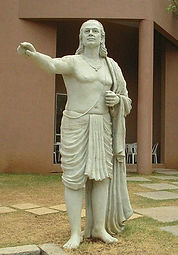
Mathematics
In Ancient India
Ancient Indian mathematics emerged in the INDIA in 1200 BC, continued till the end of the 18th century. In the period of Indian mathematics, important contributions were made by scholars like Aryabhata, Brahmagupta, and Bhaskara II. The decimal number system that we use today was first developed in Indian mathematics. Ancient Indian mathematicians made early contributions to the concept of zero(0) as a number, negative numbers, arithmetic, and algebra. In addition, trigonometry was further advanced in India, and, in particular, the modern definitions of sine and cosine were developed in India only. These mathematical concepts were transmitted to the Middle East, China, and Europe and led to further developments that now form the foundations of many areas of mathematics.
Aryabhatta: The founder of Zero(0)

Aryabhatta (476-550 A.D.) was one of the world’s greatest mathematician-astronomer. He lived in Patliputra(now known as Patna) where he wrote his famous treatise the "Aryabhatta-siddhanta" but more famously the "Aryabhatiya", the only work to have survived. The mathematical part of the Aryabhatiya covers arithmetic, algebra, plane trigonometry and spherical trigonometry. It also contains continued fractions, quadratic equations, sums of power series and a table of sins. He is among the greatest mathematician’s ever known in the world history. His greatest contribution is in the field of mathematics is giving the numerical “0”. He certainly did not use the symbol, but the French mathematician Georges Ifrah argues that knowledge of zero was implicit in Aryabhatta's place-value system as a place holder for the powers of ten with null coefficients. Studies of Aryabhatta further helped Greeks and Arabs to account the future achievements. Bhaskara I was an Indian mathematician of the 7th century, who probably lived between c.600- c.680 as expected. He was most likely the first to use a circle for the zero in the Hindu-Arabic decimal system, and while commenting on Aryabhata's work, he evaluated an extraordinary rational approximation of the sine function. He was educated by his father in astronomy. He is considered to be a follower of Aryabhatta I and one of the most renowned scholars of Aryabhata's astronomical school.
Aryabhatta
Best Viewed in Google chrome and Firefox(latest).